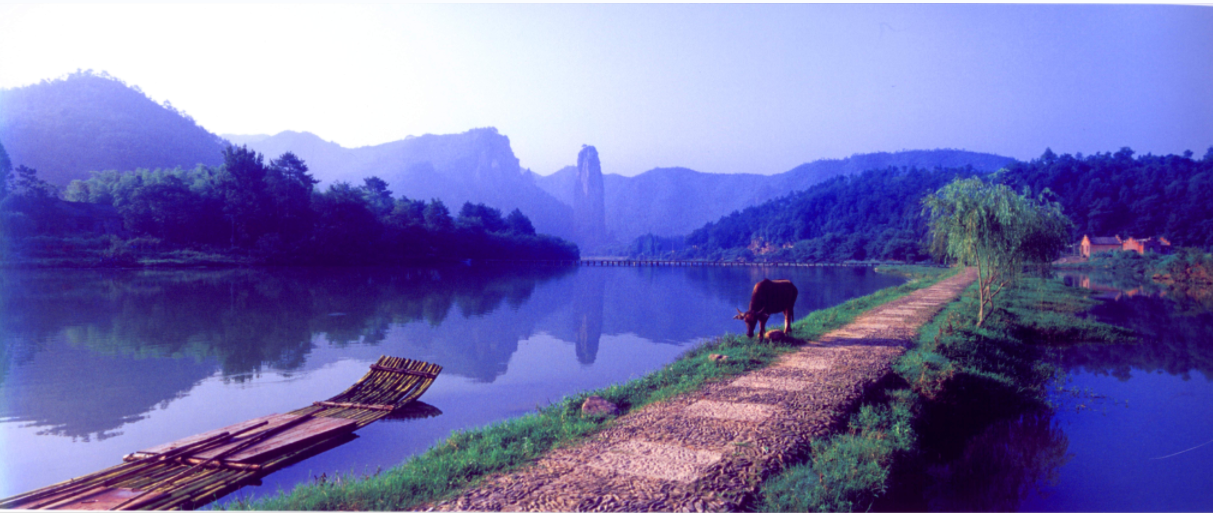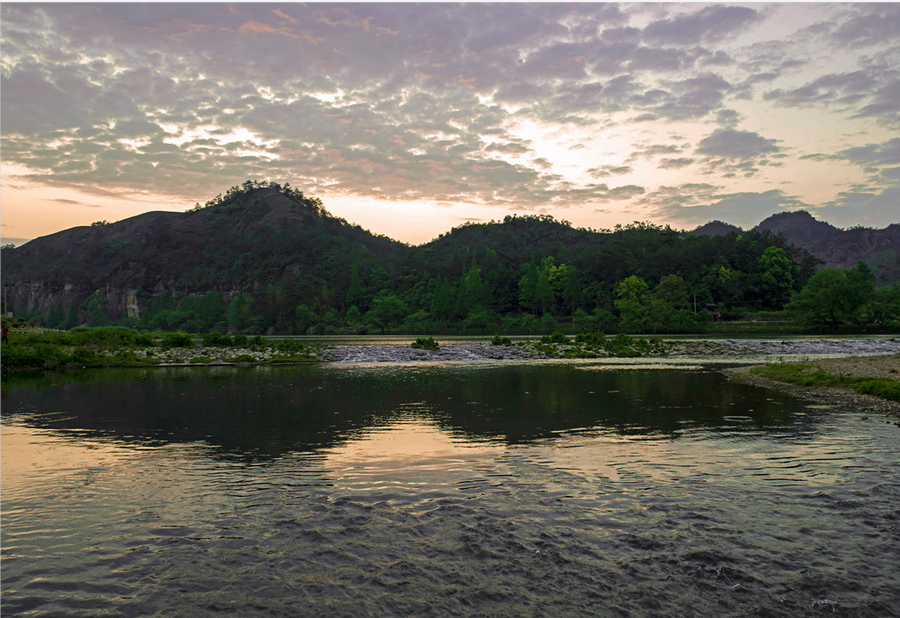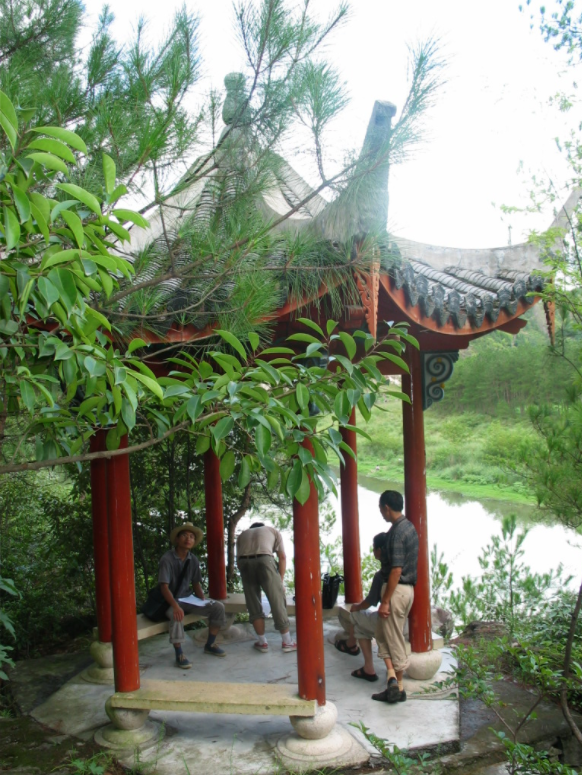Mount Zhutan
Mount Zhutan is right opposite Banyan Village across the river. Zhu Xi, a famous neo-confucianist, gave lectures in Xiandu in 1180 A.D., the 7th year of Chunxi period in the Southern Song Dynasty. He frequently came here in his spare time, boating on the clear lake or strolling about in the mountains. Later, people named the pond Zhutan Pond and the mountain beside the pond Mount Zhutan. Zhu Xi also styled himself as Huiweng; therefore, there is Huiweng Rock on Mount Zhutan, which is dozens of meters in height and extends over 100 meters north-southward. In the middle of the rock is Huiweng Cave, and Huiweng Pavilion was built by the cave. The clear pool, overhanging cliff, pavilion &cave, as well as shades of ancient trees make it a good place for enjoying solitude and self-cultivation.

Immortal Causeway
There is a long cobblestone causeway flanked by whirling willows between T-shape Bridge in Banyan and Mount Zhutan. Since it spans across the bridges, the Peak Viewing Pavilion on the causeway is the perfect place to capture reflection of Dinghu Peak. Zhutan Pond beyond the causeway is now a water park of Xiandu. Numerous couples have their wedding photos shot here and make Dinghu Peak, Haoxi River and Lianjin Bridge the witness of their true love. This romantic causeway has been regarded as the bridge of magpies for all lovers; hence, it got the name Immortal Causeway. Many TV series and films were shot here, including The Legend of Sword and Fairy I, The Twins, Legendary Fighter - Yang's Heroine, The Legend of Sword and Fairy III, Xuan Yuan Sword, The Palace: The Lost Daughter, The Swords of Legends, Monk Comes Down the Mountain, and Princess Weiyoung, etc.

Peak Viewing Pavilion
By Zhutan Pond, there is a pavilion with single eave pyramidal roofs at four corners standing on the Immortal Causeway. It is called Peak Viewing Pavilion. Looking southward in the pavilion, one can appreciate beautiful landscapes including the crystal clear water of Zhutan Pond, long bridges spanning across the water, farmers ploughing in the green field, birds flying in the blue sky, Dinghu Peak standing straight and tall and its graceful reflection in the water. Therefore, it is regarded as one of the best place for capturing Dinghu scenery and got its name.

Nine-Dragon Wall
It is also named Dragon Cliff or Dragon Grotto. Located on the southwest of Mount Zhutan, the cliff extends over one hundred meters along the river. Due to natural weathering and lateral erosion by flowing water, there are many belt-shaped lateral erosion grooves of different depths and distinct gradation. Parallel with the water surface of Haoxi River, these irregular grooves seem to be numerous coiled dragons crouching on the wall; hence, it is named Nine-Dragon Wall.

Huiweng Pavilion
Zhu Xi, the great neo-confucianist in the Southern Song Dynasty, also styled himself as Huiweng. Since Zhu ever had a rest here during his stay and lecturing in Xiandu, the cave, rock and pavilion here were all named after him. At the pass of Mount Zhutan, there is a rock resembling a half-coiled dragon. The rock is dozens of meters in height and extends over one hundred meters north-southward. At the tail of the rock at the southwest hillside, there is a spacious cave. The pavilion was built against the rock near the cave. With two corners tilted outside the cave, the wood-structured pavilion is 6 meters high and covers a land area of 90 square meters. Surrounded by steep cliffs, clear pond and river, pines and bamboos, breeze and shadows as well as deep caves, this small half-sized pavilion is an ideal place for mediating and quietness seeking.

Pavilion for Standing Aloof
Located behind the Rock Pagoda near the river on Mount Zhutan, the pavilion is a good place to appreciate sunrise. At the time, one feels as if he stood aloof from this mortal life, so it was name Pavilion for Standing Aloof.
 official WeChat
official WeChat
 official weibo
official weibo








